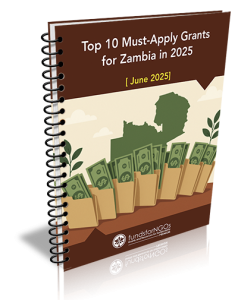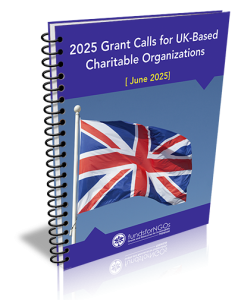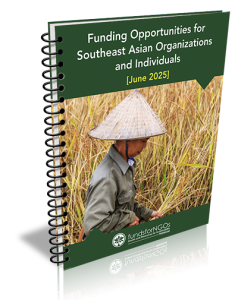Navigating the world of grant applications can be a daunting task for many NGO professionals. The terminology used in this field is often filled with jargon that can confuse even the most seasoned grant writers. Understanding the language of grant applications is crucial for successfully securing funding.
This article aims to demystify the key terms and concepts associated with grant applications, providing actionable insights and strategies that can enhance your organization’s chances of receiving financial support. In the realm of grants, terminology serves as the foundation upon which successful applications are built. From understanding the nuances of a Request for Proposal (RFP) to grasping the intricacies of budgeting, each term carries significant weight in the application process.
By familiarizing yourself with these terms, you not only empower yourself but also position your organization to present compelling proposals that resonate with funders. This article will guide you through essential concepts, ensuring that you are well-equipped to tackle the challenges of grant writing.
Understanding the Request for Proposal (RFP)
Understanding the RFP: A Roadmap to Success
Understanding an RFP is akin to having a roadmap; it directs your efforts and helps you tailor your proposal to meet the funder’s expectations.
Paying Attention to Details
When reviewing an RFP, it is essential to pay close attention to the details. Funders often include specific questions or areas of focus that they want applicants to address. For instance, an RFP may emphasize the importance of community engagement or sustainability in project design.
Aligning with Funder Priorities
By aligning your proposal with these priorities, you demonstrate that you have not only read the RFP but also understand the funder’s mission and objectives. This alignment can significantly enhance your proposal’s chances of success.
Key Components of a Grant Application
A well-structured grant application typically consists of several key components that work together to present a cohesive narrative about your project. These components include an executive summary, project description, goals and objectives, methodology, and evaluation plan. Each section plays a vital role in conveying your project’s significance and feasibility to potential funders.
The executive summary serves as a snapshot of your proposal, summarizing the main points in a concise manner. It should capture the essence of your project and entice reviewers to read further. The project description delves deeper into the specifics, outlining the problem you aim to address, your target population, and how your project aligns with the funder’s priorities.
Clearly defined goals and objectives are crucial; they provide measurable outcomes that demonstrate the impact of your project. Lastly, an evaluation plan outlines how you will assess the effectiveness of your project, ensuring accountability and transparency.
Budgeting and Financial Terms
Budgeting is a critical aspect of any grant application, as it provides funders with a clear understanding of how their money will be utilized. A well-prepared budget not only reflects the financial needs of your project but also demonstrates your organization’s fiscal responsibility. Key financial terms to understand include direct costs, indirect costs, matching funds, and in-kind contributions.
Direct costs are expenses that can be directly attributed to the project, such as salaries for project staff, materials, and travel expenses. Indirect costs, on the other hand, are overhead expenses that support the overall functioning of your organization but cannot be directly linked to a specific project. Understanding how to allocate these costs appropriately is essential for creating a realistic budget.
Additionally, many funders require matching funds or in-kind contributions as a demonstration of commitment from your organization or community partners. This requirement not only strengthens your application but also fosters collaboration and resource sharing.
Evaluation and Reporting Requirements
Evaluation and reporting are integral components of grant management that ensure accountability and transparency in how funds are utilized. Funders often require grantees to submit regular reports detailing project progress, outcomes achieved, and any challenges encountered along the way. Understanding these requirements from the outset can save you time and effort later on.
When crafting your evaluation plan, it is essential to establish clear metrics for success. These metrics should align with the goals and objectives outlined in your proposal and provide quantifiable data that demonstrates your project’s impact. Regular reporting not only keeps funders informed but also allows you to reflect on your progress and make necessary adjustments to improve outcomes.
By prioritizing evaluation and reporting in your grant application, you signal to funders that you are committed to transparency and continuous improvement.
Commonly Used Acronyms and Abbreviations
The world of grant applications is rife with acronyms and abbreviations that can be overwhelming for newcomers. Familiarizing yourself with these terms can streamline your application process and enhance communication with funders. Some commonly used acronyms include RFP (Request for Proposal), LOI (Letter of Intent), and SOW (Statement of Work).
Understanding these acronyms is not just about memorization; it’s about grasping their significance within the context of grant applications. For example, a Letter of Intent (LOI) is often a preliminary step in the application process where organizations express their interest in applying for funding. A well-crafted LOI can set the stage for a successful proposal by establishing a connection with the funder early on.
Similarly, a Statement of Work (SOW) outlines specific tasks and deliverables associated with a project, providing clarity on expectations for both parties involved.
Tips for Writing a Successful Grant Application
Writing a successful grant application requires careful planning, attention to detail, and a clear understanding of both your project and the funder’s priorities. One effective strategy is to start early; give yourself ample time to research potential funders, gather necessary documentation, and draft multiple versions of your proposal. This approach allows for revisions based on feedback from colleagues or mentors who can provide valuable insights.
Another tip is to tell a compelling story about your project. Funders are often motivated by passion and purpose; therefore, weaving personal narratives or testimonials into your application can create an emotional connection that resonates with reviewers. Additionally, be sure to follow all formatting guidelines provided in the RFP meticulously; adherence to these details reflects professionalism and respect for the funder’s process.
Resources for Further Assistance
For NGO professionals seeking further assistance in navigating grant applications, numerous resources are available to enhance your skills and knowledge. Online platforms such as GrantSpace offer webinars, articles, and tools specifically designed for grant seekers. Additionally, local nonprofit associations often provide workshops or networking opportunities where professionals can share experiences and best practices.
Engaging with experienced grant writers or consultants can also be beneficial. These individuals can offer personalized guidance tailored to your organization’s unique needs and help refine your proposals for maximum impact. Finally, consider joining online forums or social media groups focused on grant writing; these communities can provide support, answer questions, and share valuable resources that can aid in your grant application journey.
In conclusion, mastering grant application terminology is essential for NGO professionals aiming to secure funding for their projects. By understanding key components such as RFPs, budgeting terms, evaluation requirements, and commonly used acronyms, you can navigate the complex landscape of grant writing with confidence. Implementing actionable tips and leveraging available resources will further enhance your ability to craft compelling proposals that resonate with funders and ultimately drive positive change in your community.









































